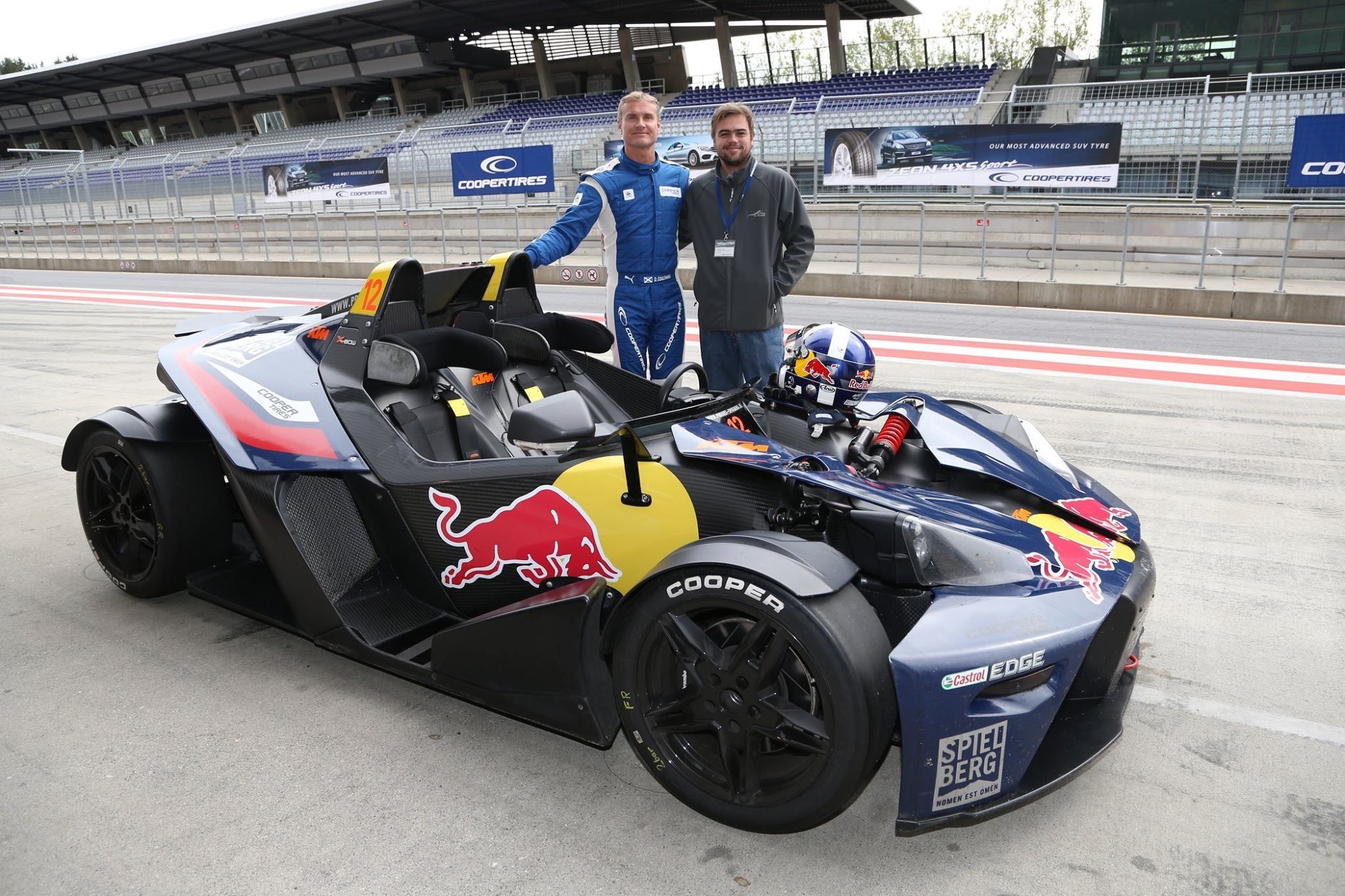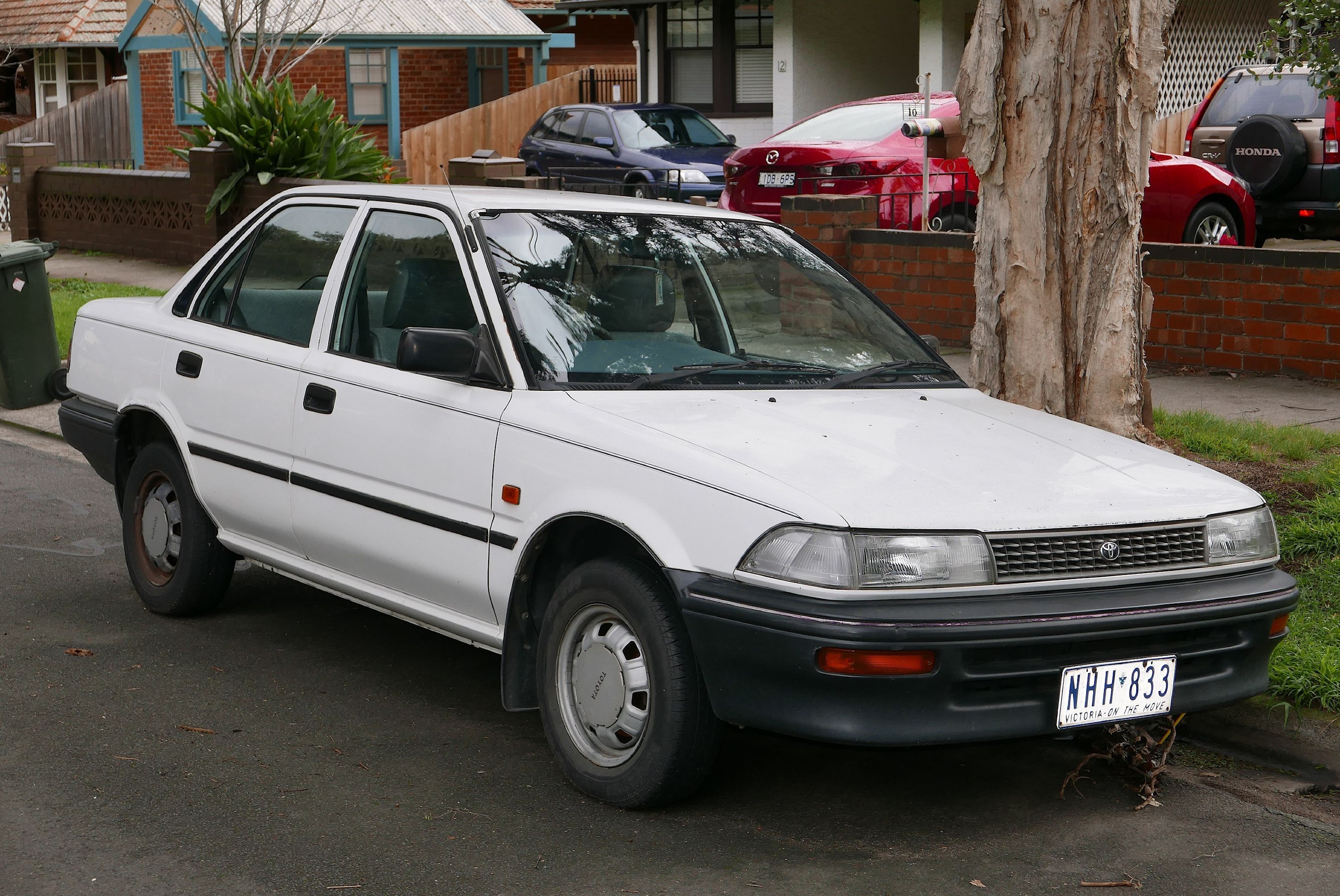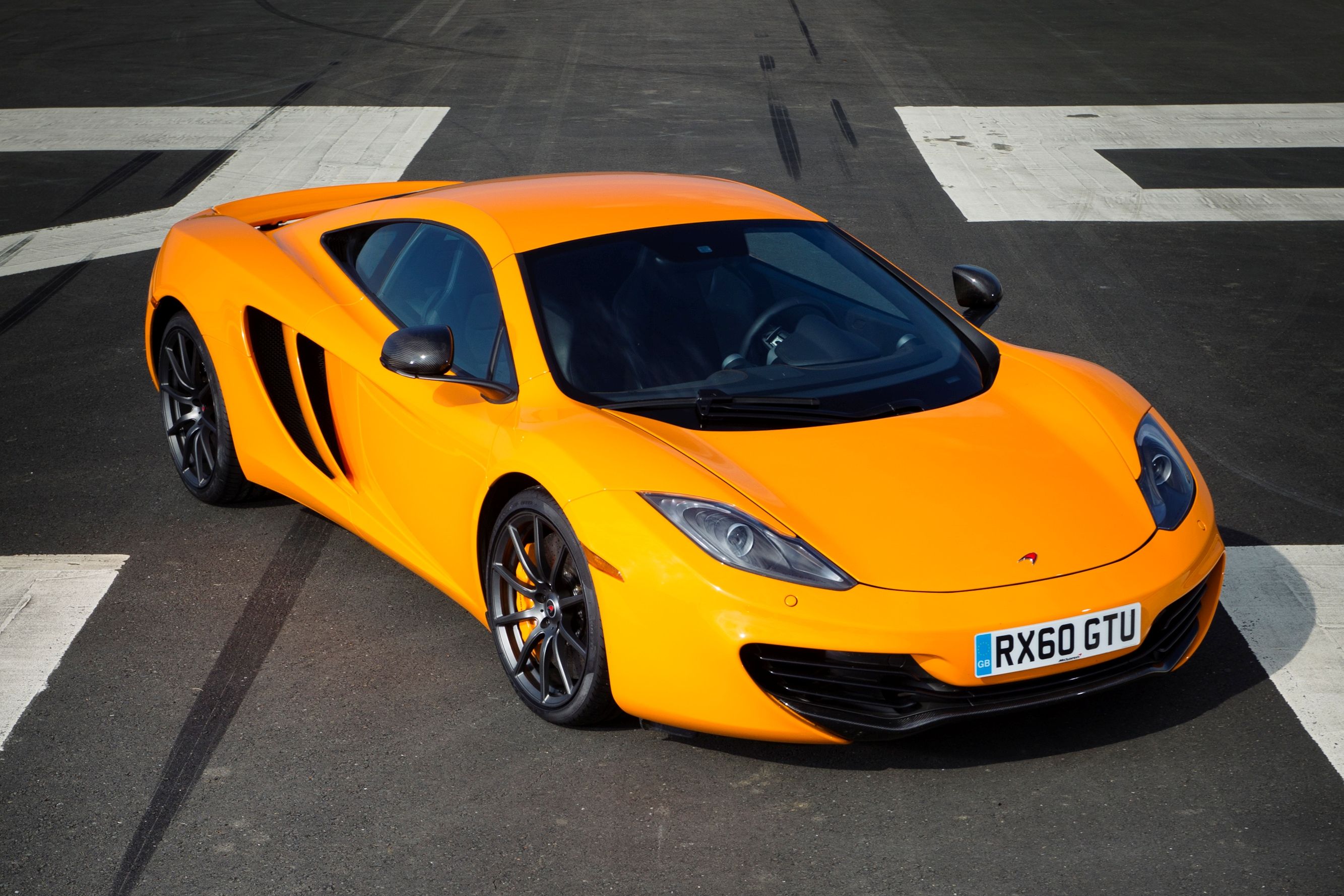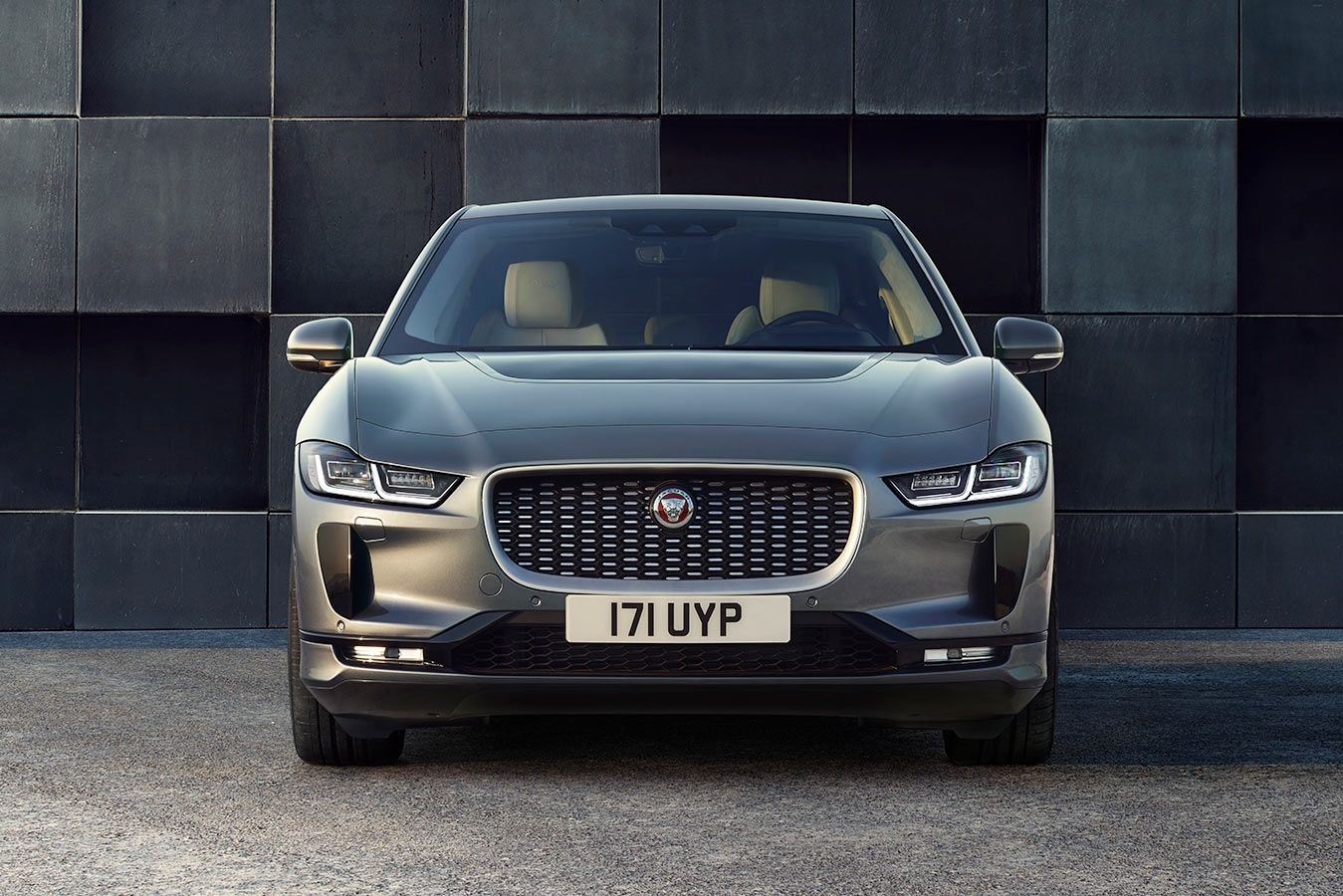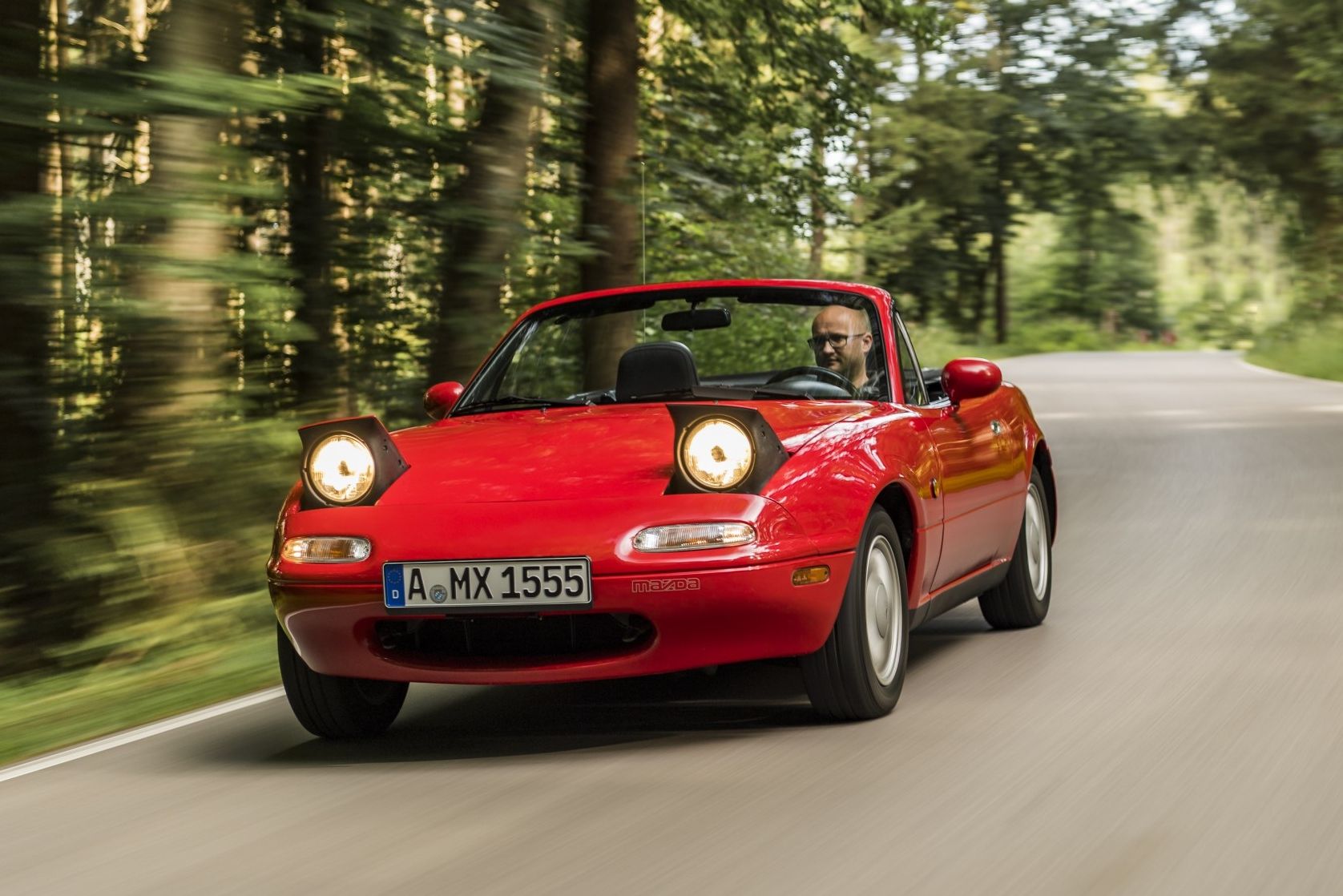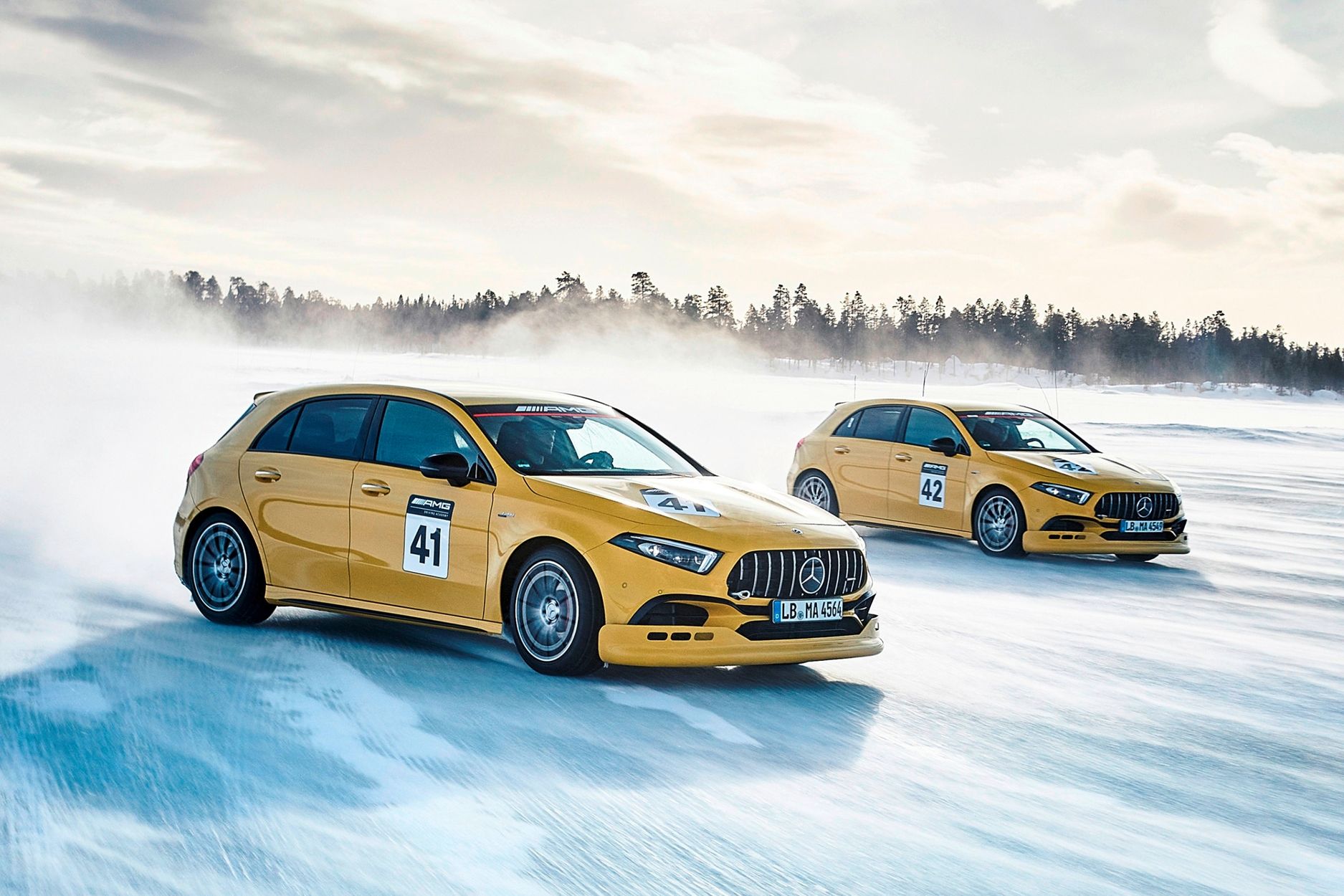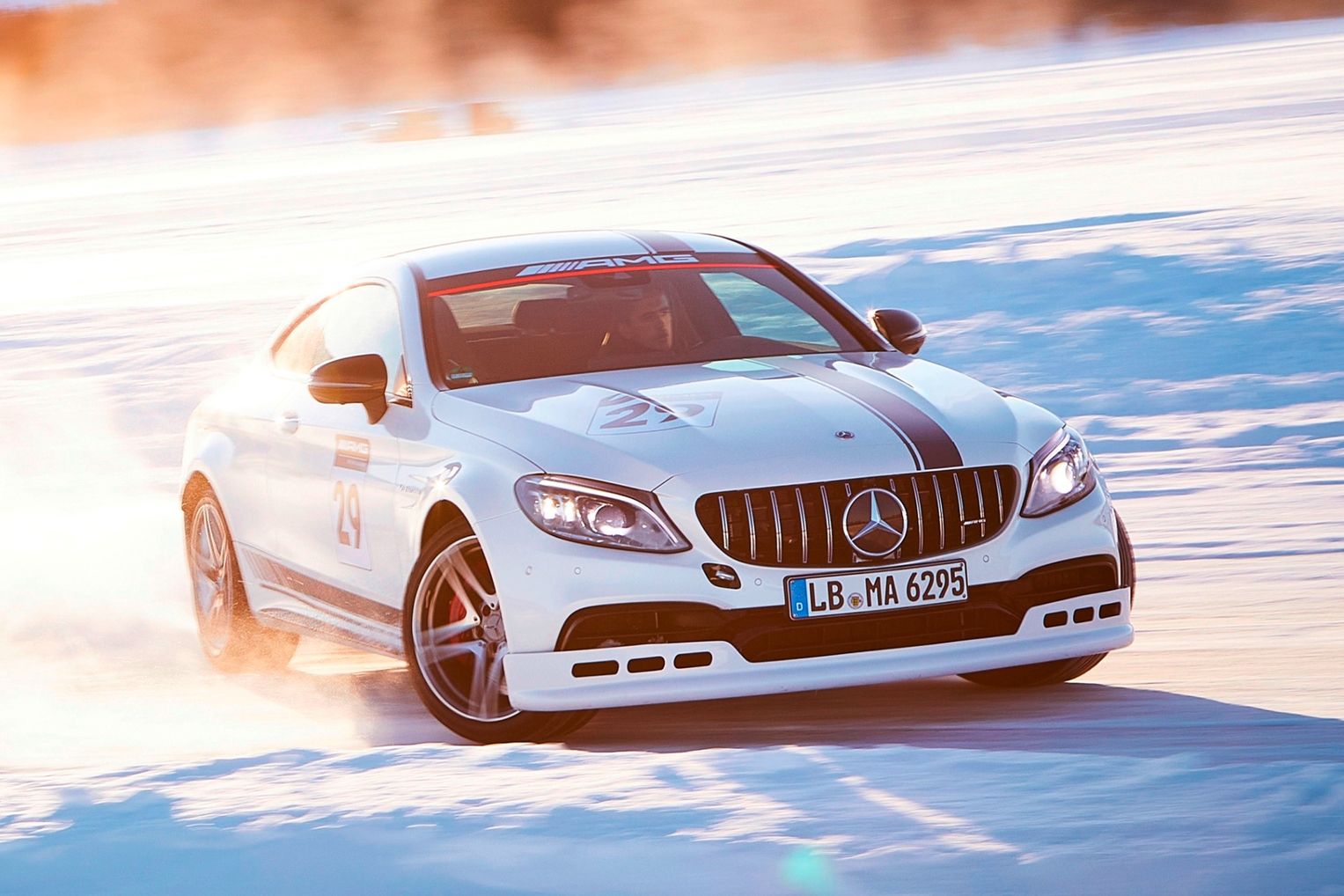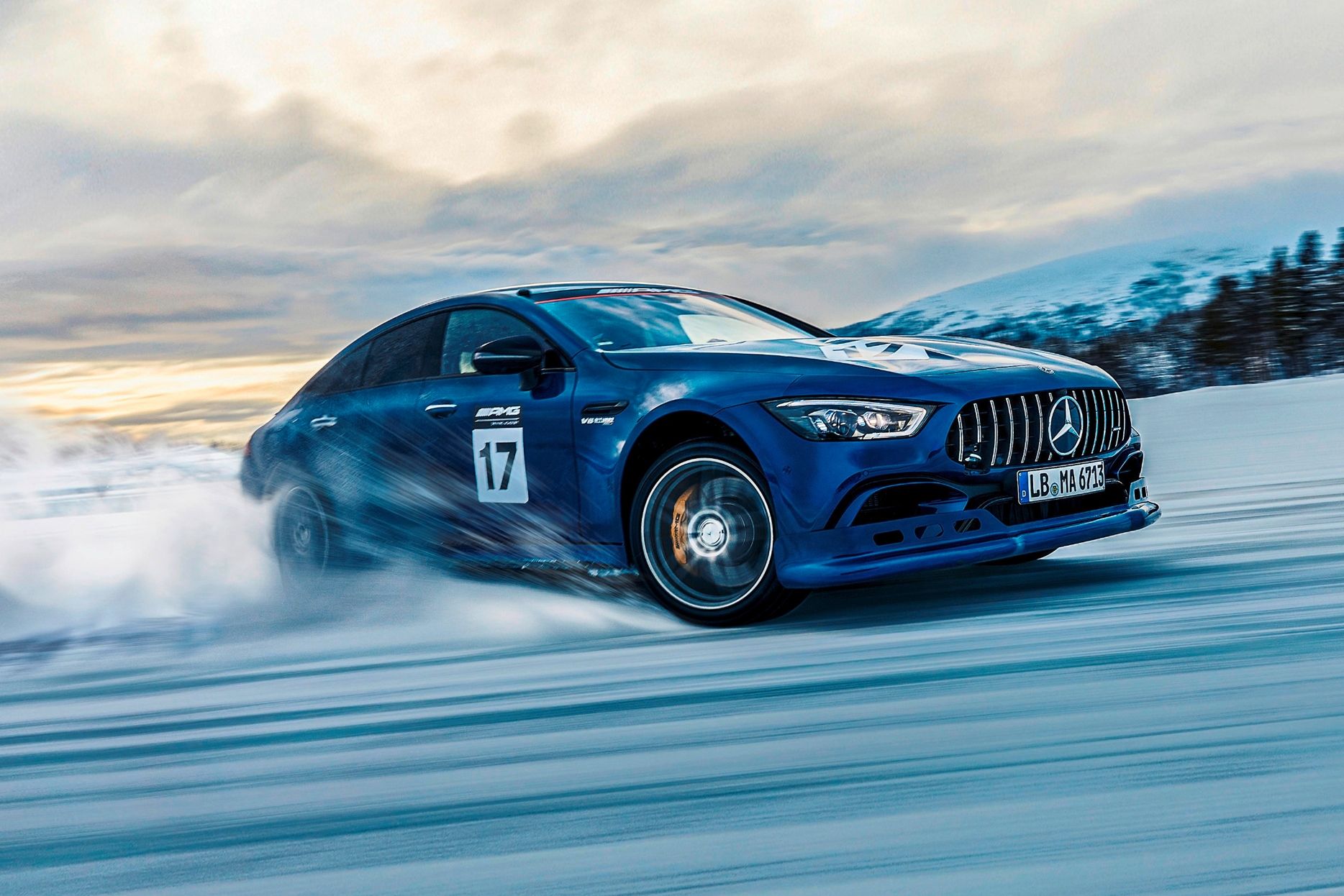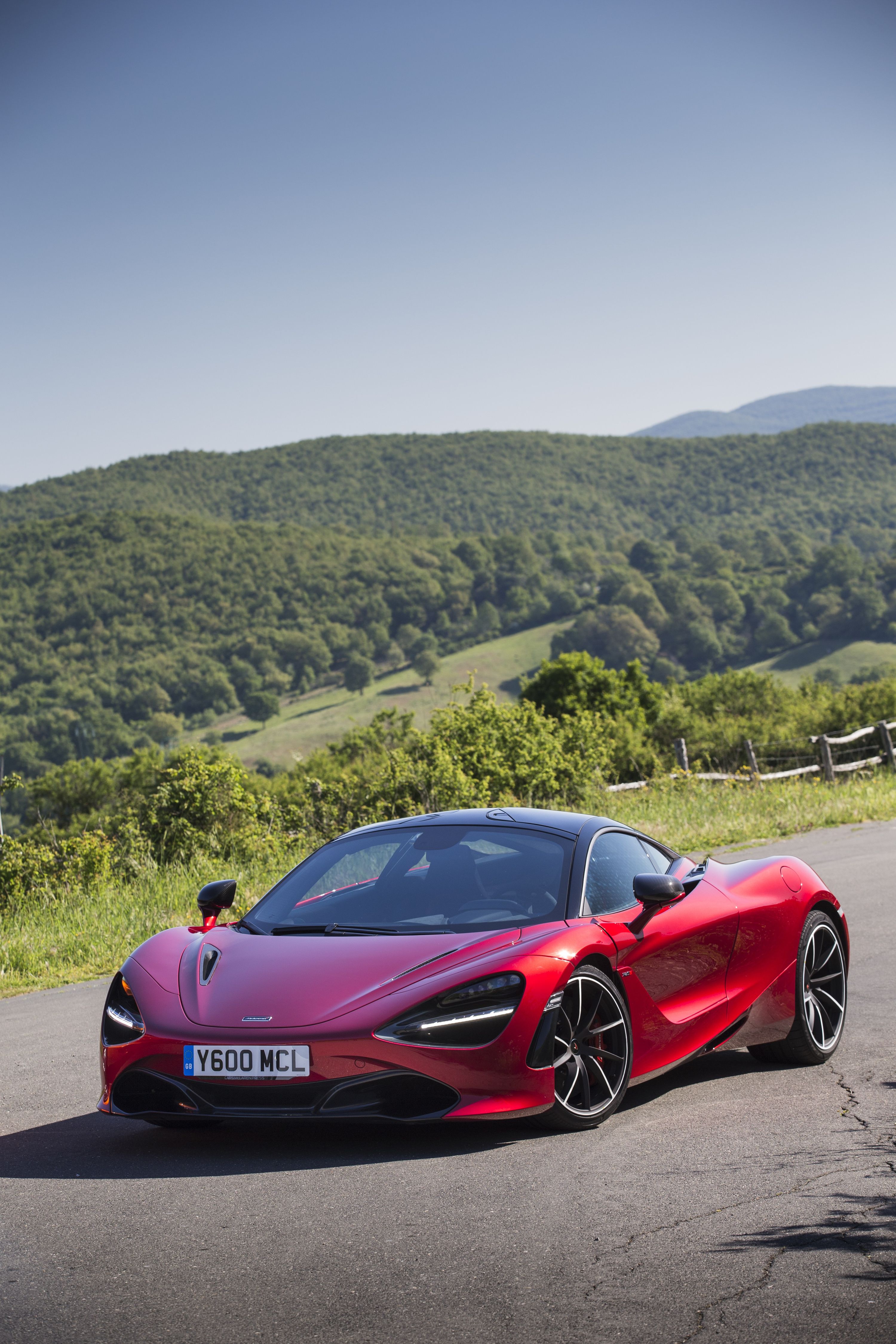
I started my career in automotive journalism roughly 13 years ago as part of a scholarship. The idea was to spend a year at various publications, learning the tricks of the trade. In between these stints at websites, print publications, TV studios, and even a manufacturer's public relations department, I spent several weekends learning how to handle a powerful car.
I lost count of the number of certificates I received from advanced driver academies, but the highlight has to be the day I received driving tips from David Coulthard. That's like receiving bedroom advice from Johnny Sins.
I'll be completely honest and admit that I thought I was a baller when I started this job. My dad had a series of sports cars that could do 0-60 mph in six to seven seconds, and I thought that if I could handle that kind of fierce acceleration in a straight line, I must be well on my way to becoming an F1 driver.
But my faith in my driving skills came crashing down on an innocent-looking gravel road. I was 18 and driving around in a ratty Corolla. My girlfriend at the time let me know that her parents were out of town, and we all know what that really meant. So there I was, hooning down a gravel road to her house in the sticks. I got nervous about the high speed during a particularly long corner, so I lifted. Those of you who know, know what happened next.
But that was back in my college days before I even understood the concept of weight transfer. Fast forward a couple of years and several advanced driver training sessions later, and I now know that gravel driving requires a particular set of skills. It's more forgiving than tarmac, but steering inputs should be minimal, and you need the confidence to keep the throttle pinned if the car starts going sideways.
As a youngster, my superiors were careful not to expose me to fast machines too early. You first must prove competence before being handed the keys to a blistering supercar, so I had to drive mundane front-wheel-drive devices for two years before I was allowed to start testing faster machines. The first one I recall was the previous-generation Audi TT RS with a manual gearbox. After two years of indoctrination about looking after test cars, I found a Subaru WRX STI to race.
The next car that made a huge impact was the McLaren MP4-12C. Even by modern standards, it's stupid fast. The Big Mac scared me. That's the first time I experienced the kind of fast that perhaps errs on the wrong side of fun. In other words, when a car's acceleration is so intense that it can only be described as scary. Since then, I've driven a few such cars, and the performance potential never really bothered me.
I wasn't worried that anyone with a license could go in and buy a car like the McLaren 720S because what are the chances of that actually happening? Yes, there are certain people who buy an insane machine like a Ferrari 812 Superfast because it's the ultimate symbol of wealth, but those cars are usually driven slowly so everyone can see the driver.
And genuine enthusiasts know enough to respect a high-performance car. Still, you get the occasional idiot that disengages the traction and stability control while leaving a car meet, which usually results in a supercar perching itself on a YouTube car spotter - no great loss. I'm kidding, of course.
My discomfort started growing once EVs started arriving. My first experience with an EV was the BMW i3. I liked it very much, right up to the point where the skinny tires lost traction on a wet road. The immediate power delivery devastated the electronic nannies, and the car did a complete 360.
My next big test with an EV was the Jaguar I-Pace. Jag made a big deal about the performance, so my colleagues and I wanted to see how it fared against the most powerful ICE SUV at the time, which was the Jeep Grand Cherokee Trackhawk. Off the line, the Trackhawk could not keep up with the Jag. The supercharged Jeep only caught the Jag at the end of the quarter-mile. In the interest of full transparency, the Jeep's brakes were slightly worn, which meant the launch control wasn't functioning correctly.
Then the truly potent stuff started flooding the market. Suddenly, a humdrum saloon like the Tesla Model S had supercar-like acceleration, and that's when I started becoming uncomfortable.
We don't even need to go as high as a Tesla Model S for impressive acceleration figures. A Hyundai Ioniq 5 will hit 60 mph in less than five seconds. The new Kia EV6 GT will get there in under four. The slowest version of the best-selling EV on the planet - the Tesla Model Y - can get to 60 mph in less than five seconds too.
Before we go any further, we need to put those figures in context. The iconic E46 M3, when it was new, got to 60 mph in five seconds. The Ferrari F430 could get there in 3.8 seconds. Not that long ago, these were blistering cars, adored by enthusiasts for pushing the boundaries of internal combustion. Now, a hipster in an electric Kia can beat them both without even breaking a sweat.
There's even more reason to be concerned. In a recent interview, we asked Lucid whether the horsepower war will stop at some point. It said no, and that it could see its cars producing 3,000 horsepower in three to four years. Earlier this week, Rimac stated that future hypercars will be able to get to 60 mph in less than a second.
All of the above brings us to the question of whether a new driver's license system is required.
If you had asked me 10 years ago, I would have said no. I despise government intervention and the holier-than-thou officials trying to tell me what's good for me. My own personal car, or rather the one I use the most, is a safety nightmare. It would likely give an NHTSA official a heart attack from 50 yards away.
I'm talking about my NA Miata, and I love it for all the reasons the safety police hate it. It does not have ABS, though it is equipped with traction control, otherwise known as the throttle. I love it because it provides an unfiltered driving experience you just don't get anymore. There's no way the NA Miata could be produced today, and I love that about it.
And yet I have to wonder which car is more unsafe. My slow-ass Miata with zero nannies, or a humble mass-produced car that can hit 60 mph in four to five seconds?
As proof, I'd like to submit the video below. We've all heard about and seen videos featuring unintended acceleration. A person gets frightened behind the wheel, and the knee-jerk reaction is to stomp on the brakes. Somehow they miss the middle pedal and bury the throttle in the carpet. YouTube is full of these videos, and below you'll find an entire compilation.
The footage is scary enough, but now imagine it with a car that can increase its speed at three times the rate of all the various cars featured in the video.
And the above will happen more. As EVs become the norm, so will brisk acceleration. As gearheads, we need to remember one universal truth. Most people don't care about cars. They see them as white goods that serve no other purpose than getting them from point A to point B. They see no need to improve their driving skills.
You and I think differently. I'm willing to bet everyone reading this has done some sort of advanced driver training. We wear our ability to slide a car as a badge of honor, even though it makes no sense. We take pride in looking after our toys because we know we'll reap the rewards.
But the white goods are getting stupid fast, so the roads are filling up with uninterested people in charge of missiles. Perhaps we should start selling cars based on skill? The libertarian in me just died a little, but it is what it is.
At the beginning of this missive, I told you about my first car crash. I was young, dumb, and in a rush to get to my girlfriend's house. Thankfully, my dearly departed father was once a young man, so he knew better than to buy me the Miata I so desperately wanted back then. My Corolla was slow AF, reaching 60 mph in 30 Mississippis.
When I left the road, it took the various bushes no more than 50 yards to slow me down. What would have happened if I was driving a brisk EV? We all know young people like to push the limits in cars. It's just a fact of life.
Soon, the modern equivalent of an eighth-generation Corolla will be a used Kia EV, in which case a young man can accelerate to his girlfriend's house much quicker than I ever could. As the father of two sons, it scares the heck out of me. What kind of stupid antics will they get up to in a used Ioniq 5 years from now when they go to college?
Perhaps a separate license isn't the answer. It sounds a bit elitist, and it's something the government can take away for even the slightest of trespasses.
What about a more advanced driver training system? Did you know it takes two years (perhaps even more) to get a car license in Finland? That's because it's a non-standardized, standardized system. Every person has to complete the usual theory examinations, but there are several driving tests. You need to master skids, driving at night, and slippery conditions. Basically, Finland looked at a list of every possible kind of trouble a person can get themselves into behind the wheel and devised a practical education program for it.
Best of all, the driving instructors will identify if a person has a natural talent or not. If you don't, you get more lessons. You don't get to go out unsupervised until the Finnish government is sure you're not going to lift mid-corner like a total spanner.
But that's just my opinion. Feel free to add your comments below.

